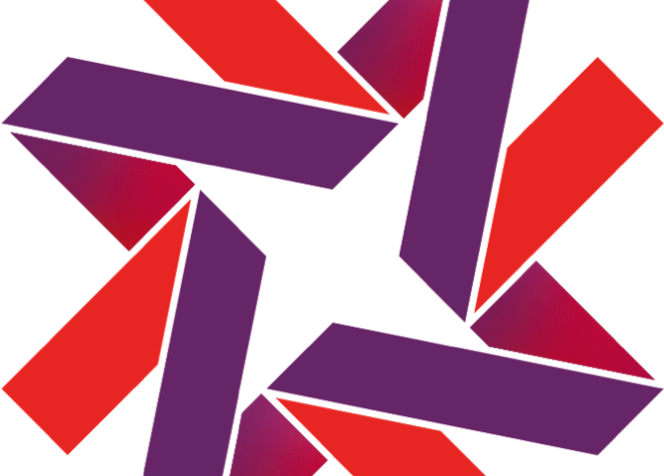For those who call it just “look-and-feel” — think again. Think VIBE.
John Nishimoto
Merriam and Webster agree that the word “vibe” means a feeling or spirit that someone or something gives you.
The Urban Dictionary echoes that, adding, “a distinctive emotional atmosphere.” So when a project manager at a large global brand consultancy handed out a project status sheet with lots of narrow columns and rows, along with dates and acronymed deliverables that, in the abstract, meant nothing at all, I was skeptical. Until finally, one of them spoke to me.
“Stacy, what’s a V.I.B.E.?” I asked, having had one sip of coffee at most. She calmly stated that it stood for “Visual Identity Basic Elements.” That was the aha moment for me. You see, when you work as a brand consultant, clients typically see you as solely focused on the logo. And to a large extent that is true — I’ve worked with brand guys over the years who couldn’t care less about the right fonts or images used on branded communications, but were really more focused on the logo, on the tail fin of the 747 or the flag in front of the corporate offices. More simply put, that means most folks in this industry think “brand = logo.” I always bristled at this commonly accepted, misguided notion. Yes, logos are important. They mark your marketing territory. And yes, brand is about an experience and a set of expectations with a customer, employee, blah, blah, blah.
But the visual system, the graphical stuff, the elements that are there to support the logo (more commonly referred to as “secondary graphics”), to me, are the real players delivering your message. You know these character actors by name, don’t you? — typography, color palette, imagery and secondary graphics, or what we lovingly call “unifying graphics,” as, at the end of the day, these are the components that are the glue for your branded experience. When it comes down to it, you want your customers and prospects to receive an email, pick up a piece of collateral or experience a store or office space and say, “I know which brand is delivering to me this amazing experience” — all without seeing the logo at the bottom of the page! That’s why I call it VIBE or Visual Identity Basic Elements. They are much more than a supporting cast for your logo. They are the key messengers for why your brand is relevant and engaging, and holds a distinctive position in your relative marketplace.
Think of Starbucks’s illustrative and painterly wall murals and textures that touch everything from their store design to their product packaging. Think of Burberry’s signature tartan pattern. One glimpse, and you know exactly whose trench coat, blazer or umbrella that is. Think of Google’s generous use of white space, along with simple, primary colors in type and action buttons. These are the visual cues that together create a personality, an experience — better yet, they conjure a certain vibe.
What are the VIBE components?
Color
Think of this beyond “If all my competitors are blue …” (which is often the case) to “Which color captures our personality and extends where we came from generationally?” Also, with digital and environmental applications being more critical to marketing and sales, ask: “How well will our corporate colors perform consistently across different color spaces, media and technology?”
Typography
I describe this as “visual voice.” If every brand has a tone and manner, or way of speaking to your audience, shouldn’t they also convey a spirit or feeling in the way those words are set in type? Whether it’s smart, accessible, creative or simple, your choices in typeface and typography either help or hurt in conveying your brand personality.
Imagery
If a picture says a thousand words, then need I say more? Images convey that which is important to your brand and the feeling or spirit you want your key audiences to take away. Example: If a financial services house uses stock images for its advertising, website and marketing communications, and one of those same images shows up on a feminine hygiene–product billboard in Grand Central Station, who wins? Be authentic to who your brand is as a persona and don’t go on the cheap just because you can, when selecting or commissioning new imagery.
Unifying graphics
This can be as simple as a blue rule at the top of every communication. Or, a better way to think about it is the white Coca-Cola wave graphic against their trademark red, or the blue bands both top and bottom that letterbox every IBM TV spot. Unifying graphics are recurring characters that earmark every communication or interaction opportunity as branded separately from the logo.
Geometry
In the VIBE vernacular, “geometry” means use of space and shapes on a given communications surface. This could be, for example, every communication using a one-third to two-thirds grid from top to bottom — with the top third being white space, or the area not taken by copy or imagery. Or every piece using a circular window on it to hold imagery or content or color. Using branded geometry is a consistent way to demarcate spatial relationships to convey a consistent look-and-feel. Think Google’s use of clean, open white space to focus strictly on what’s important: the information you need.
In today’s episode of Think VIBE, I am asking for those in the know to help me prove my point here. Take a look at the five examples of VIBE in the rotating banner above. Comment on who you think each of these brands are, and, if you’re feeling adventurous, what that particular element says about their brand. Quick example: their signature bold red with the white graphic flourish. Could be a lot of brands, but you’d be hard-pressed to walk into a grocer or convenience store in the cold beverage section and not identify these visual cues as Coca-Cola. OK, that was an easy one, and we’ve been trained to remember what these elements stand for over the last 125 years.
Good luck, and please be sure to leave a smart comment or two. See you on the next edition of Think VIBE.
Related News & Insights
-
 Insight
InsightThe power of five: Promoting confidence in your brand
Right now, every business has felt or continues to feel it: Spending is down. Skepticism among consumers, employees and shareholders is high. Marketers are unsure how to best leverage the limited resources they have, but they recognize times of uncertainty are opportunities to increase market- and mind-share. Where to start? Let’s assume […]
-
 Insight
InsightCSR? ESG? GRI? What people really want is your POV.
Creating a content platform that does more than report on your impact. People want to know the impact you’re having on them and the world. And more and more, investors, business partners, employees and customers want more than just information. It’s no longer enough to pull together a smart set of key […]
-
 Insight
InsightHidden opportunity: Use every project to build your brand.
Business leaders have always raised an eyebrow when it comes to the ROI of enterprise-wide branding programs. These programs are multiyear, multi-million-dollar expenditures that look and feel great, but are not seen as contributing to short-term capture of new revenue / market share or short-term business results. In light of current economic doldrums, marketers […]


